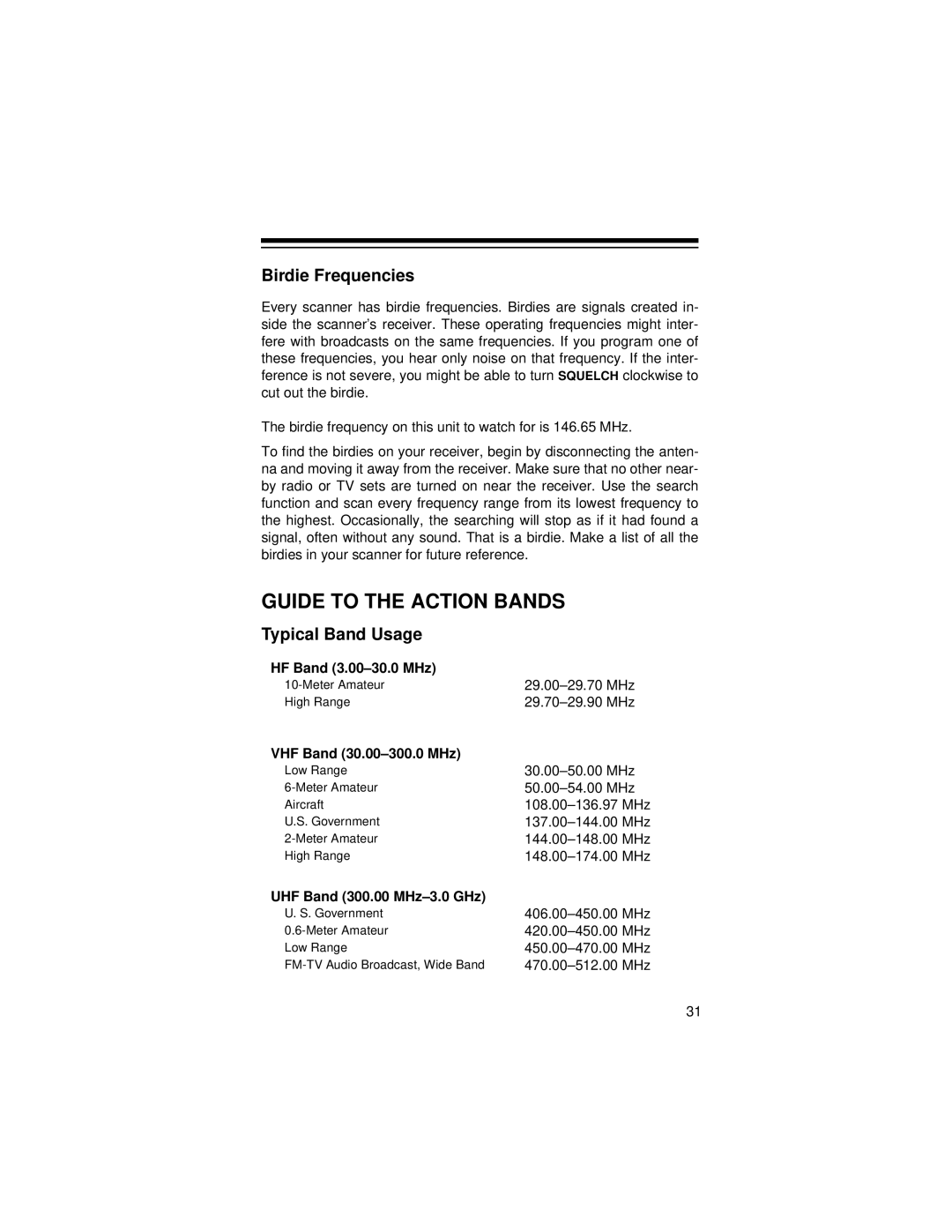Pro-71 specifications
The Radio Shack Pro-71 is a compact and versatile handheld scanner that remains a favored choice for enthusiasts of radio communication. Designed for ease of use, the Pro-71 offers a variety of features that cater to both casual listeners and dedicated hobbyists. One of its standout characteristics is its impressive frequency coverage. The radio can receive a wide range of frequencies, from VHF and UHF bands to public safety channels, aircraft communications, and even some amateur radio bands. This extensive range adds to the versatility of the device, allowing users to explore countless transmissions.Equipped with 300 memory channels, the Pro-71 enables users to store and quickly access their favorite frequencies. This feature greatly enhances convenience, particularly for those who frequently monitor specific channels. Additionally, the scanner includes a priority channel option, enabling users to monitor a specific channel while scanning through others. This ensures that important communications do not go unnoticed, especially during critical monitoring sessions.
One significant technology featured in the Pro-71 is its autofrequency search capability. This allows users to scan through the radio waves automatically, quickly identifying active frequencies without the need for manual input. The ease of operation is complemented by a backlit display, which ensures visibility of information even in low-light environments. This thoughtful design allows users to adjust to their scanning needs regardless of the conditions.
Furthermore, the Pro-71 offers a range of scanning modes, including single, memory, and auto store scan modes. This flexibility enhances the listening experience, as users can select the mode that best suits their monitoring requirements. The built-in keypad allows for intuitive operation, and the robust speaker delivers clear audio, ensuring that users can easily discern communication.
Durability plays a significant role in the design of the Pro-71, making it suitable for both indoor and outdoor use. Its compact size and lightweight construction enable easy transport, making it an ideal companion for travel, outdoor events, or emergency preparedness.
Overall, the Radio Shack Pro-71 delivers a powerful combination of features, technologies, and characteristics appealing to both novice and seasoned users. Its flexibility, wide frequency coverage, and user-friendly design continue to make it a trusted tool in the world of radio monitoring.
